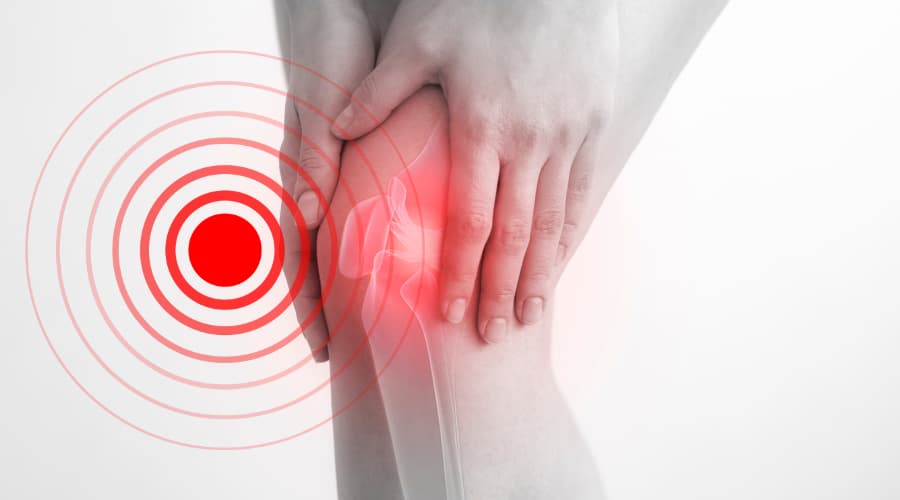Osteoarthritis (OA) is a prevalent and debilitating joint disease, marked by the gradual degradation of cartilage, leading to pain, stiffness, and impaired movement. Affecting millions worldwide, OA significantly impacts the quality of life, often limiting daily activities and social engagement. Amidst various treatment options, hyaluronic acid (HA) injections have emerged as a promising therapy.
HA, a natural component of joint fluid, plays a crucial role in maintaining joint lubrication and cushioning. As a treatment, HA injections aim to replenish this vital substance, potentially reducing pain and improving joint function.
Osteoarthritis
Osteoarthritis (OA) is the most common form of arthritis, characterised by the deterioration of cartilage in joints, leading to pain, stiffness, and reduced mobility. It primarily affects the knees, hips, hands, and spine. Symptoms often include joint pain that worsens with activity, swelling, decreased range of motion, and a grating sensation during joint movement. OA’s prevalence increases with age, affecting both men and women, with a higher incidence in those over 65.
Risk factors include age, obesity, joint injuries, genetics, and occupations demanding repetitive joint use. This chronic condition has a significant impact on individuals’ quality of life and is a leading cause of disability worldwide.
Hyaluronic Acid in Joint Health
Hyaluronic Acid (HA) is a naturally occurring substance found in the synovial fluid of joints, playing a crucial role in maintaining joint health. It acts as a lubricant and shock absorber, facilitating smooth joint movements and cushioning against impact. With age and the progression of osteoarthritis (OA), the concentration and quality of HA in the joints diminish, leading to reduced lubrication and increased friction. This degradation contributes significantly to the symptoms of OA, such as joint pain and stiffness.
HA Injections in OA Management
Hyaluronic acid (HA) injections for osteoarthritis (OA) work through viscosupplementation. This treatment involves injecting HA directly into the affected joint. The injected HA acts as a lubricant and shock absorber, restoring some of the synovial fluid’s natural properties lost in OA. This helps reduce joint pain, improves mobility, and can decrease inflammation. By supplementing the joint’s natural HA, these injections aim to improve joint function and alleviate the symptoms of OA, providing a therapeutic benefit beyond mere pain relief.
Clinical Benefits of HA Injections
The primary clinical benefits of hyaluronic acid (HA) injections in managing osteoarthritis (OA) are significant pain relief and improved joint mobility. These injections help restore the natural lubricating properties of the synovial fluid in the joint, reducing friction and alleviating pain. This improvement in lubrication can also enhance joint mobility, allowing for more manageable and less painful movement.
Compared to other OA treatments, such as non-steroidal anti-inflammatory drugs (NSAIDs) and corticosteroids, HA injections offer a different mechanism of action. While NSAIDs and corticosteroids primarily reduce inflammation and pain, HA injections aim to restore the natural biomechanical environment of the joint. This can result in longer-lasting symptom relief with a lower risk of side effects commonly associated with long-term use of NSAIDs and corticosteroids, such as gastrointestinal issues or increased risk of infection.
Types of HA Injections
Hyaluronic acid (HA) injections for osteoarthritis come in various formulations, each designed to cater to the specific needs of the joint and the severity of the condition.
High-Molecular Weight HA:
These formulations are designed to closely mimic the properties of natural joint fluid, offering effective cushioning and lubrication. They are often chosen for their longer-lasting effects in the joint space.
Cross-Linked HA:
This type of HA has enhanced stability and can provide extended symptom relief compared to non-cross-linked varieties.
Mobile Reticulum HA:
A newer formulation combines HA with other elements to improve its viscoelastic properties and potential therapeutic effects.
Tailoring the treatment involves considering factors like the patient’s age, activity level, severity of OA symptoms, and individual response to previous therapies. This personalised approach ensures that the chosen HA formulation optimally addresses the specific requirements of each patient’s condition.
Safety and Efficacy
Numerous clinical trials and research studies have supported the safety and efficacy of hyaluronic acid (HA) injections. These studies generally indicate that HA injections are safe and effective for many individuals with osteoarthritis. Common side effects are usually mild, including pain, swelling, or redness at the injection site. Serious side effects are rare.
However, HA injections might only be suitable for some. Contraindications include allergies to HA products, infections in or around the joint, and certain skin diseases. As with any medical treatment, the benefits and risks of HA injections should be discussed with a healthcare professional to determine the best course of action for each patient’s condition.
HA Patient and Treatment Protocols
Patient selection for hyaluronic acid (HA) injections typically involves individuals with mild to moderate osteoarthritis who have not responded adequately to other treatments like physical therapy or NSAIDs. Ideal candidates are those without significant joint deformity or advanced-stage osteoarthritis.
The recommended treatment schedule varies, but it generally involves a course of injections, typically administered weekly for three to five weeks. The effects of the treatment can last for several months, and repeat courses may be considered based on the patient’s response and clinical judgment.
Advances in HA Therapies
Recent advancements in HA injection therapies have focused on enhancing the effectiveness and duration of relief provided by these treatments. Innovations include developing new molecular structures of HA to improve its viscosity and elasticity, better mimicking natural joint fluid. There’s also ongoing research into combining HA with other therapeutic agents to enhance its anti-inflammatory and pain-relieving properties. Prospects include personalised HA treatments based on individual patient profiles and the specific characteristics of their osteoarthritis.
HA Treatment in Kent
Vale Health Clinic in Tunbridge Wells offers hyaluronic acid (HA) treatment for osteoarthritis, providing a specialised approach to manage joint pain and improve mobility. Their focus on HA injections reflects the latest advancements in osteoarthritis therapy, tailored to meet individual patient needs.
Related Articles
- Ostenil Plus: Hyaluronic Acid Injections
- Hyaluronic Acid Injections FAQs
- Patient Selection Criteria for Hyaluronic Acid Injections
- Understanding Osteoarthritis of the Knee
- Knee Osteoarthritis: Symptoms and Treatment




